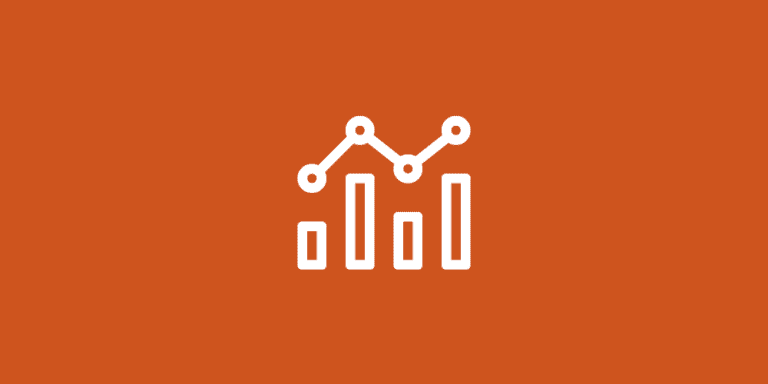6 Steps: How to Use Zapier with Google Sheets for Success

Are you tired of manually updating your Google Sheets and juggling multiple apps? What if we told you that there’s a way to automate your workflow and get more done in less time? Enter Zapier, an automation tool that connects Google Sheets with your favorite apps to streamline your work processes. In this blog post, we’ll explore how to use Zapier with Google Sheets to boost your productivity and efficiency.
From automating data entry to simplifying survey analysis, we’ll cover six steps to help you harness the power of how to use Zapier with Google Sheets. Whether you’re new to automation or a seasoned pro, this guide will provide valuable insights and tips to optimize your workflow, save time, and focus on what truly matters.
Key Takeaways
- Set up a Zapier account to connect Google Sheets quickly and automate tasks.
- Streamline project management by integrating tools like Asana, Trello, or Eventbrite with Google Sheets.
- Automate email management and backup with Gmail or Microsoft Outlook integrations for an organized inbox and easily accessible backups of crucial emails.
Getting Started with Zapier and Google Sheets

Zapier is an automation tool that allows you to create automated workflows, known as Zaps, between web applications. Integrating Zapier with Google Sheets allows you to tap into the full capabilities of a portion of Zapier’s platform, saving time and effort. For instance, imagine a seamless connection between your Google Sheets and Todoist, where a new task is generated in Todoist whenever you add a new row to your spreadsheet. Sounds convenient, right?
To get started, you’ll need to:
- Set up a Zapier account
- Connect Zapier to your Google Sheets by navigating to the Zapier website, signing up, and selecting the desired Google Sheets account
- Once connected, you can begin your automation journey with Google Sheets and Zapier.
Setting up a Zapier account
Creating a Zapier account is a breeze. Follow these steps:
- Navigate to Zapier.com
- Click the “Sign Up” button near a stack of menu icons representing various app integrations.
- After signing up, you can access Zapier’s dashboard and many Zaps.
To connect your Google Sheets account to Zapier, follow these steps:
- Head to the Zapier dashboard and click the “Connect” button, which is part of the vertical menu of platform options.
- Select the desired Google Sheets account.
- You’re all set! Now, you can automate your Google Sheets tasks and simplify your workflow.
Understanding triggers and actions
Triggers and actions are the building blocks of Zaps. A trigger is an event that initiates a Zap, like a new row added to a spreadsheet or an email received. For optimal results, it’s recommended that your Google Sheets document has a header row with column names, and text in the first column header is especially important when using the Create Spreadsheet Row action in the free version of Zapier.
To avoid any issues while your Zap is active, it’s advised not to delete rows in the spreadsheet or add new rows in the middle of existing data. If you need to delete rows, turn off the Zap before proceeding and reactivate it once the deletion is complete.
Grasping the concept of triggers and actions allows for the creation of efficient workflows and maximum utilization of Google Sheets automation, especially when you have a clear understanding of the process inside that reads create.
Connecting Google Sheets to other apps
The strength of Zapier and Google Sheets is the capability to link Google Sheets with other apps, simplifying work procedures and minimizing manual tasks. For example, you can connect Google Sheets to task management apps like Google Tasks or Any. Do, ensuring no task is overlooked and boosting productivity.
Another example is the connection between Google Sheets and communication tools like Slack. Integrating a Google Sheet with Slack lets you send a Slack message whenever a spreadsheet row is updated, keeping your team informed and aligned. The possibilities are endless when you connect Google Sheets with other apps, allowing you to customize your workflow and enhance efficiency.
Automating Data Entry and Updates

Never manually enter data into your Google Sheets or update existing rows again. With Zapier, you can automate these tasks and focus on more important aspects of your work. For instance, you can automatically add new leads from Facebook or LinkedIn to Google Sheets, ensuring you never miss a potential client.
Furthermore, you can maintain current data by automating updates to existing rows in Google Sheets. This can be particularly useful for managing project status updates, tracking survey responses, and more. Let’s examine how to automate data entry and updates in Google Sheets using Zapier.
Automatically adding new leads to Google Sheets
Adding new leads to Google Sheets manually can be time-consuming, but with Zapier, you can automate this process and save valuable time. For example, you can set up an automation that will save information submitted by new leads from Facebook or LinkedIn to a new row in a specified Google Sheets spreadsheet.
This smooth integration guarantees that each new lead is captured and stored in your Google Sheets, freeing you to concentrate on nurturing those leads and expanding your business. With this automation in place, you’ll never miss a potential client again.
Updating existing rows with new information
Keeping your data up-to-date is crucial for informed decision-making. Zapier allows you to automate the updating of existing rows in Google Sheets with new information. This can be particularly helpful when managing project status updates or tracking survey responses.
To set up this automation, you must add two actions to your Zap: a Lookup Spreadsheet Row search action to identify the correct Google Sheets row and an Update Spreadsheet Row action to update the row found. With this automation in action, your data will always be current and accurate, enabling better decision-making and task management.
Streamlining Project Management and Task Tracking

Managing projects and tracking tasks can be challenging, especially when information is scattered across multiple apps and platforms. Integrating Google Sheets with project management tools like Asana and Trello allows you to centralize your project data and streamline your workflow.
We’ll examine how to create tasks in Asana or Trello directly from Google Sheets rows and synchronize project status updates between Google Sheets and your chosen project management tool.
Creating tasks in Asana or Trello from Google Sheets rows
Imagine creating tasks in Asana or Trello directly from your Google Sheets rows. With Zapier, this is possible! By connecting Google Sheets to Asana or Trello, you can automatically generate tasks in your project management tool whenever you add a new row to your spreadsheet.
This smooth integration enables efficient project management, keeps your team aligned, and ensures timely task completion. No more jumping between apps or manually entering tasks – just a smooth, automated workflow that simplifies project management.
Syncing project status updates between Google Sheets and project management tools
Keeping your project status updates in sync between Google Sheets and your preferred project management tool can save you time and prevent miscommunication. With Zapier, you can automate the process of updating project status on both platforms, ensuring your team always has the most up-to-date information.
Linking Google Sheets to your project management tool allows you to:
- Create a Zap that updates the project status in both platforms whenever a change occurs in either platform
- Ensure your team stays informed and aligned
- Focus on more important tasks and drive your projects to success
This automation, a design representing a portion of the project management process, is a valuable tool for project management.
Simplifying Survey and Form Analysis

Analyzing survey and form responses can be time-consuming, especially when manually importing data into Google Sheets. With Zapier, you can simplify this process by connecting Google Sheets to popular form tools like Typeform, Gravity Forms, or JotForm.
We’ll examine how to automatically save responses from these form tools to Google Sheets, facilitating efficient data analysis and data-driven decision-making based on the feedback received.
Saving Typeform, Gravity Forms, or JotForm responses to Google Sheets
By connecting Typeform, Gravity Forms, or JotForm to Google Sheets, you can automatically save form responses to your spreadsheet, streamlining the analysis process and saving you time. This integration ensures that all your form data is conveniently stored in one place, making it easy to analyze and draw insights from the responses.
Setting up this automation with Zapier is straightforward. Follow these steps:
- Create a Zap between your chosen form tool and Google Sheets.
- Set up the trigger and action.
- Observe as new responses are automatically added to your spreadsheet.
Say goodbye to manual data entry and embrace the efficiency of a computer in managing your ads through a browser, taking care of all the details using a simplified user interface design, including menu icons to represent various functions and an orange button with text for easy navigation.
Efficient Event Management and Attendee Tracking

Event management can be a complex and time-consuming process, particularly regarding tracking attendees. Integrating Google Sheets with event management tools like Eventbrite, Zoom, or GoTo Webinar allows you to streamline this process and focus more on your event’s success.
We’ll examine how to automatically add event registrants to Google Sheets from Eventbrite, Zoom, or GoTo Webinar, ensuring an updated attendee list for efficient event management.
Adding Eventbrite, Zoom, or GoTo Webinar registrants to Google Sheets
Keeping track of event registrants can be a hassle, especially when you’re juggling multiple platforms. With Zapier, you can automatically add registrants from Eventbrite, Zoom, or GoTo Webinar to your Google Sheets spreadsheet, ensuring you have an accurate and up-to-date list of attendees.
Connecting these event management tools to Google Sheets allows you to create a Zap that adds a new row to your spreadsheet whenever someone registers for your event. This automation saves you time and effort, allowing you to focus on delivering an outstanding event experience for your attendees.
Email Management and Backup in Google Sheets
Managing emails and keeping backups can be challenging, particularly when your inbox is overflowing. Integrating Gmail or Microsoft Outlook with Google Sheets lets you automate email management and backup, ensuring you stay organized and never lose important emails.
We’ll examine how to automatically save emails to Google Sheets from Gmail or Microsoft Outlook, maintaining a clutter-free inbox and a backup of all crucial emails.
Saving Gmail or Microsoft Outlook emails to Google Sheets
Do you ever search your inbox for that one important email? With Zapier, you can automatically save emails from Gmail or Microsoft Outlook to Google Sheets, making organizing and backing your emails easy.
To set up this automation, create a Zap between your email app and Google Sheets, configure the trigger and action, and observe as your emails are automatically saved to your spreadsheet. With this integration in place, you can spend less time searching through your inbox and more time focusing on your work.
Tips for Optimizing Your Zapier and Google Sheets Workflow
Now that you’re familiar with the power of Zapier and Google Sheets optimizing your workflow for maximum efficiency and productivity is time. By leveraging the features and capabilities of both platforms, you can streamline your processes and achieve more in less time.
Here are some strategies for optimizing your Zapier and Google Sheets workflow:
- Use the appropriate triggers and actions for your specific needs
- Link your Google Sheets to apps that complement your workflow
- Regularly test your Zaps for the correct functioning.
- Use advanced features like webhooks, data mapping, and custom scripting to boost your automation.
Summary
Integrating Zapier with Google Sheets can revolutionize your workflow, save you time, and make your work processes more efficient. By following the steps and tips outlined in this blog post, you can harness the power of automation and elevate your productivity to new heights. So, why wait? Start optimizing your Zapier and Google Sheets workflow today and unlock your full potential.


